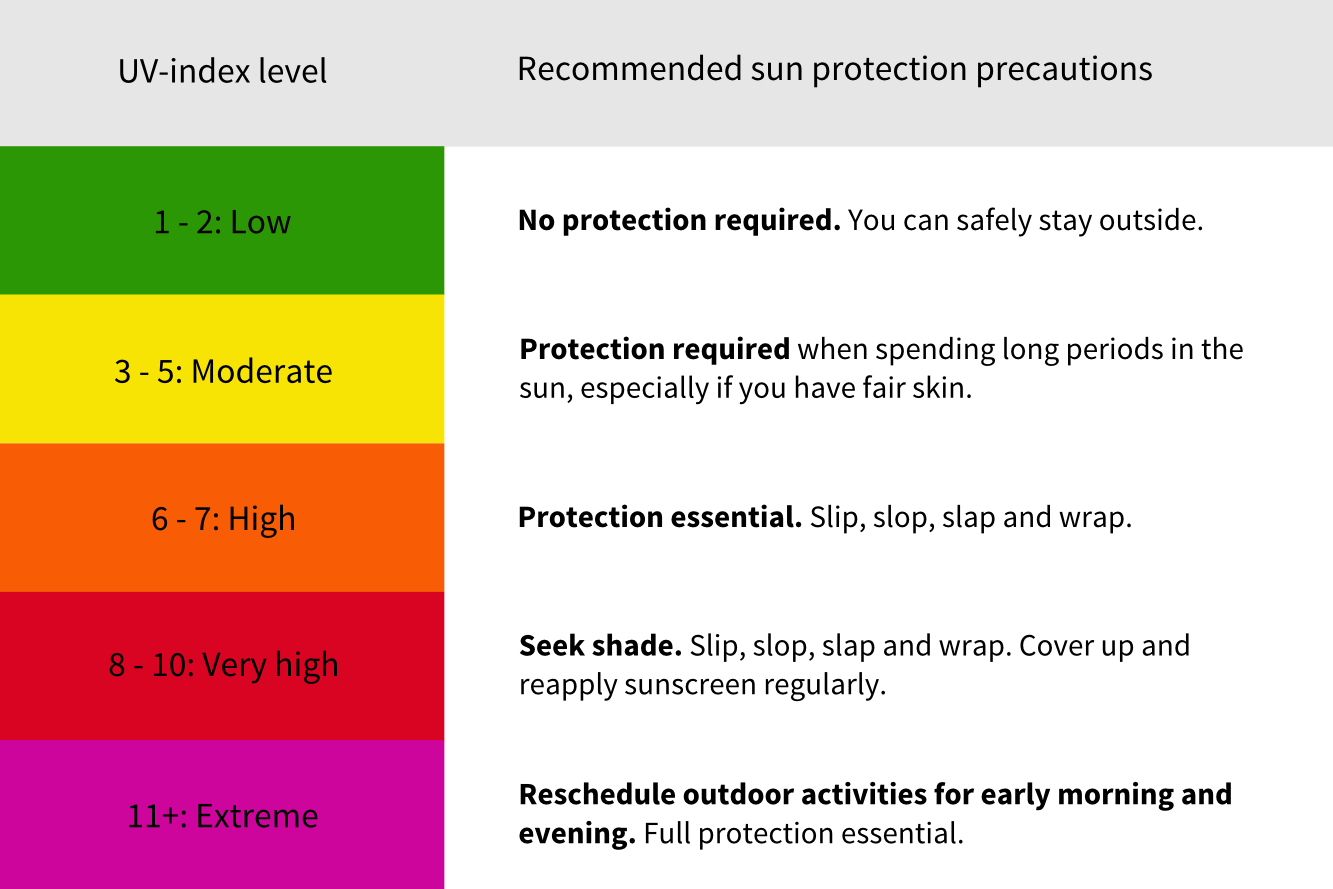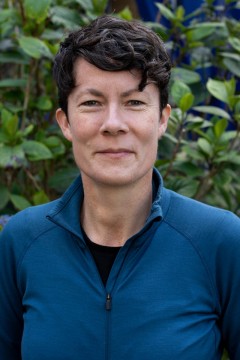About UV exposure and health
On this page:
This section gives information about UV (ultraviolet) radiation, and how it can affect our health.
Why is UV exposure important to health?
Our main exposure to UV radiation is through sunlight. UV exposure can affect our health both positively and negatively:
- Too much exposure increases the risk of developing skin cancers, cataracts and more. These are more common in New Zealand due to the high UV levels across the country.
- Too little exposure can lead to vitamin D deficiency. This can affect bone health and muscle function.
What is UV radiation?
UV radiation is part of a broad spectrum of wavelengths from the sun. UV radiation has a shorter wavelength than visible light, and we can’t feel or see it.
UV radiation is classified into three types, UVA, UVB and UVC. All three are classed as carcinogens by the World Health Organisation, meaning exposure can increase risk of cancers [1]. However, all UVC and most UVB is absorbed by the ozone layer before reaching the Earth’s surface.
Health effects of excess UV exposure
High exposure to UV radiation has been linked to a range of health issues including:
- melanoma
- non-melanoma skin cancer
- sunburn
- cortical cataracts
- sun spots (solar keratosis)
- surfer's eye (pterygium)
- reactivation of herpes labialis
- eye cancer.
The most serious of these are melanoma and non-melanoma skin cancers. According to the Global Cancer Observatory, New Zealand has some of the highest rates of melanoma and non-melanoma incidence and mortality in the world [2].
UV exposure is believed to cause between 50 and 90% of all skin cancer cases depending on region [1]. Risk factors for skin cancer include:
- genetics: Individuals with fair skin that freckle easily are at high risk
- behaviours: Limiting sun exposure at higher UV levels and using sun protection
- immune competence: Individuals taking immunosuppressant drugs or have a disorder that affects their immune system (e.g HIV).
Read the latest statistics on melanoma on the melanoma webpage.
Read the latest statistics on non-melanoma skin cancer on the non-melanoma skin cancer webpage.
Too little UV exposure can lead to vitamin D deficiency
UV radiation from the sun penetrates the skin to produce Vitamin D. It can also be found in small amounts in some foods such as milk, eggs and oily fish. Vitamin D is used in the body primarily to maintain bone health and muscle function. Low Vitamin D levels can cause:
- rickets in children: causes the bowing of legs and knocked knees
- osteoporosis and osteomalacia in adults: causing weak and brittle bones.
Read the latest statistics on vitamin D deficiency on the vitamin D deficiency webpage.
The UV Index
UV radiation that reaches the Earth’s surface is measured using the Ultraviolet Radiation Index (UVI).
The higher the UVI number, the higher the radiation level. A UVI of 3 or more is enough to damage the skin and increase the risk of skin cancer. Table 1 outlines the recommended sun protection methods as the UVI increases.
Table 1: UV index levels and sun protection precautions

Source: McKenzie 2008 [3]
Reducing your risk of skin cancer
SunSmart is New Zealand’s governing body on sun safety. Their suggestions for protecting yourself include:
- using sunscreen
- wearing a hat, sunglass and sun-protective clothing
- finding shade
- staying indoors during the middle of the day
- getting regular skin checks from your health professional
For more information, visit the SunSmart website
New Zealand’s UV levels
In New Zealand, UV levels are higher:
- during summer: High UV levels are common in Summer with Autumn and Spring also being high.
- in the north: UV levels are highest closer to the equator.
- on sunny days: Clouds can reduce the amount of UV reaching Earth’s surface.
- during the middle of the day: UV levels are typically highest from 11am to 3pm.
Read more about UV levels in New Zealand on the daily UV levels webpage.
Get some sunshine each day during winter. This is particularly important during winter for people living in the South Island, to help prevent vitamin D deficiency.
Get checked for skin cancer at your health professional.

